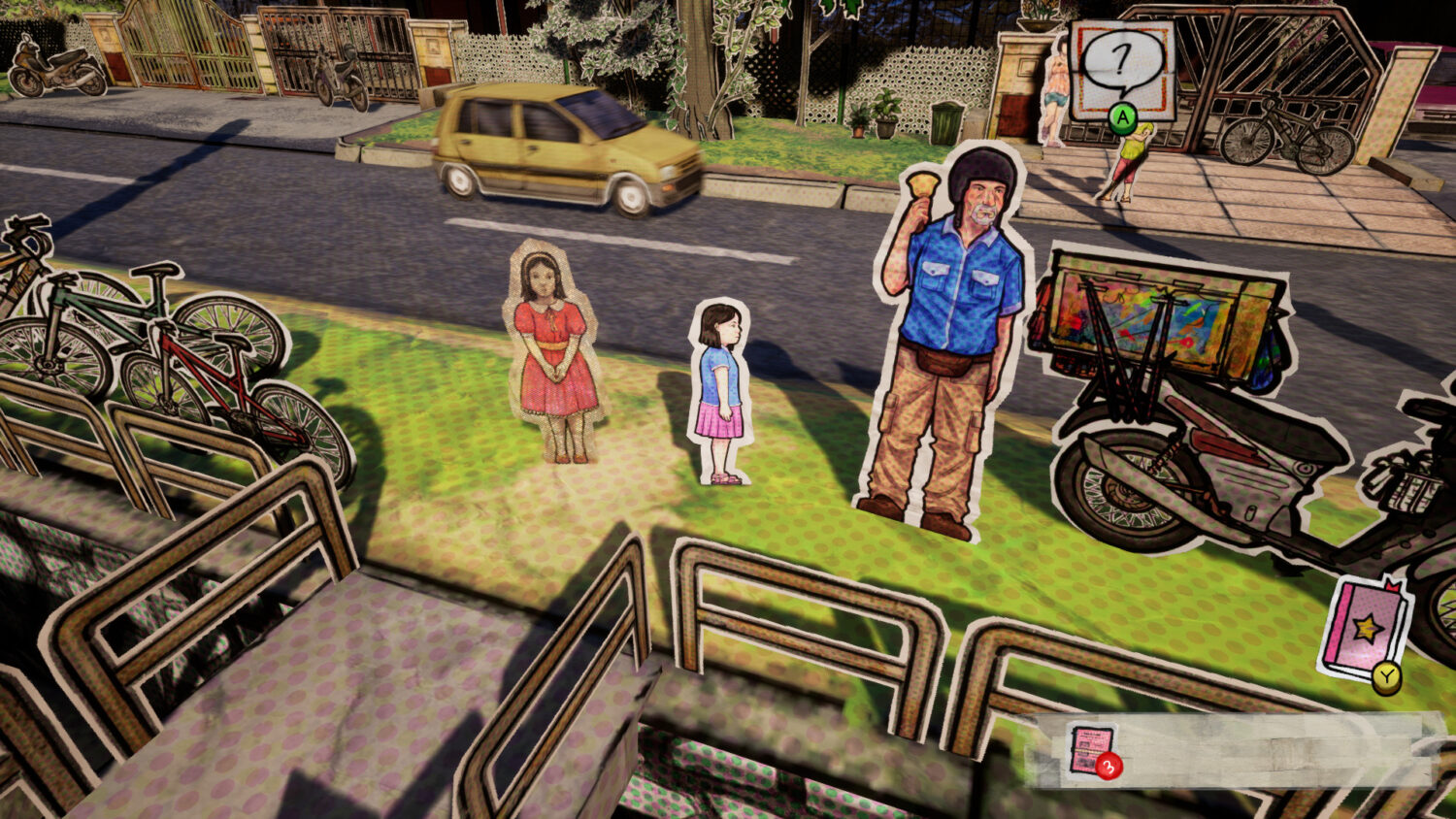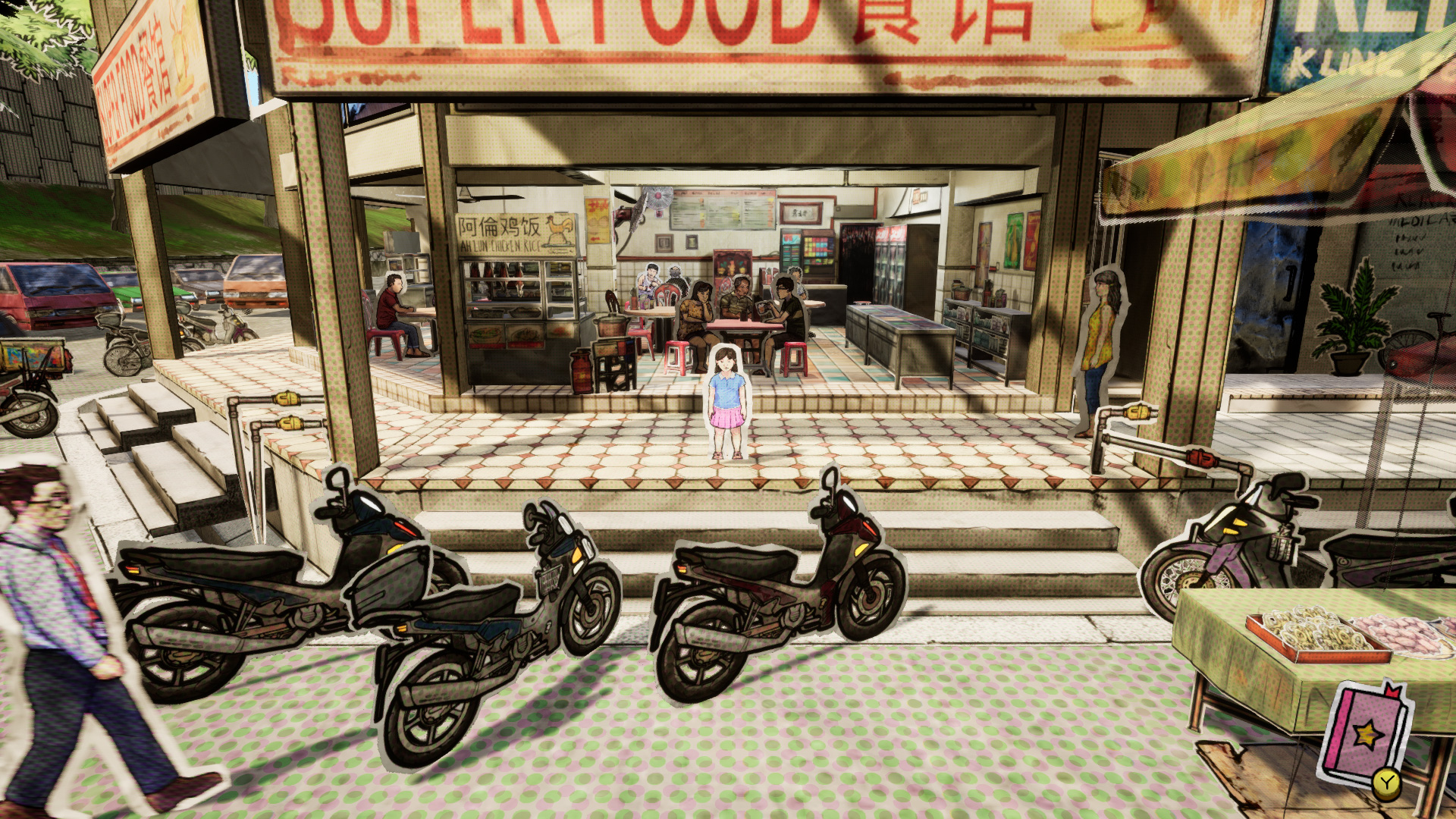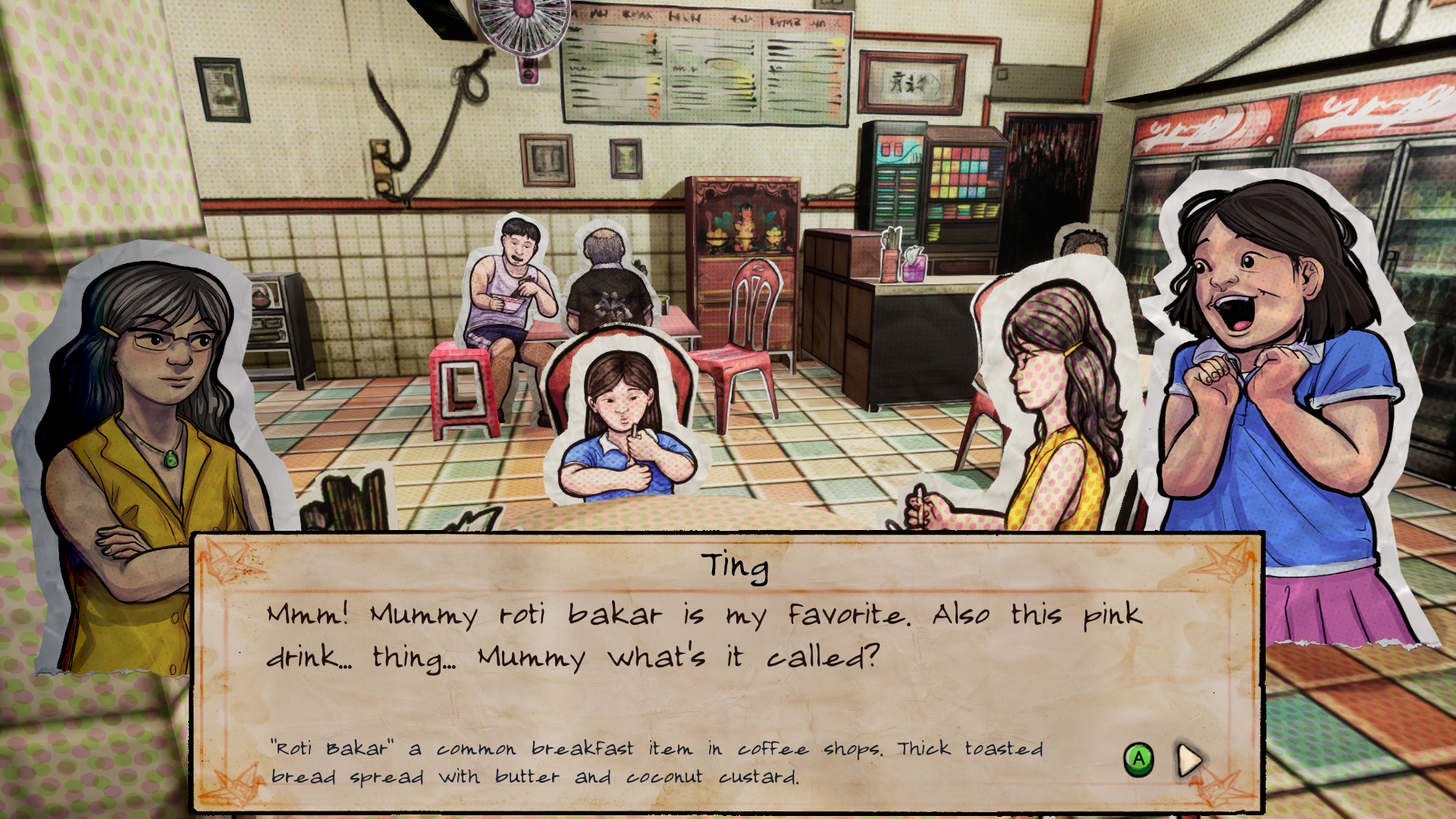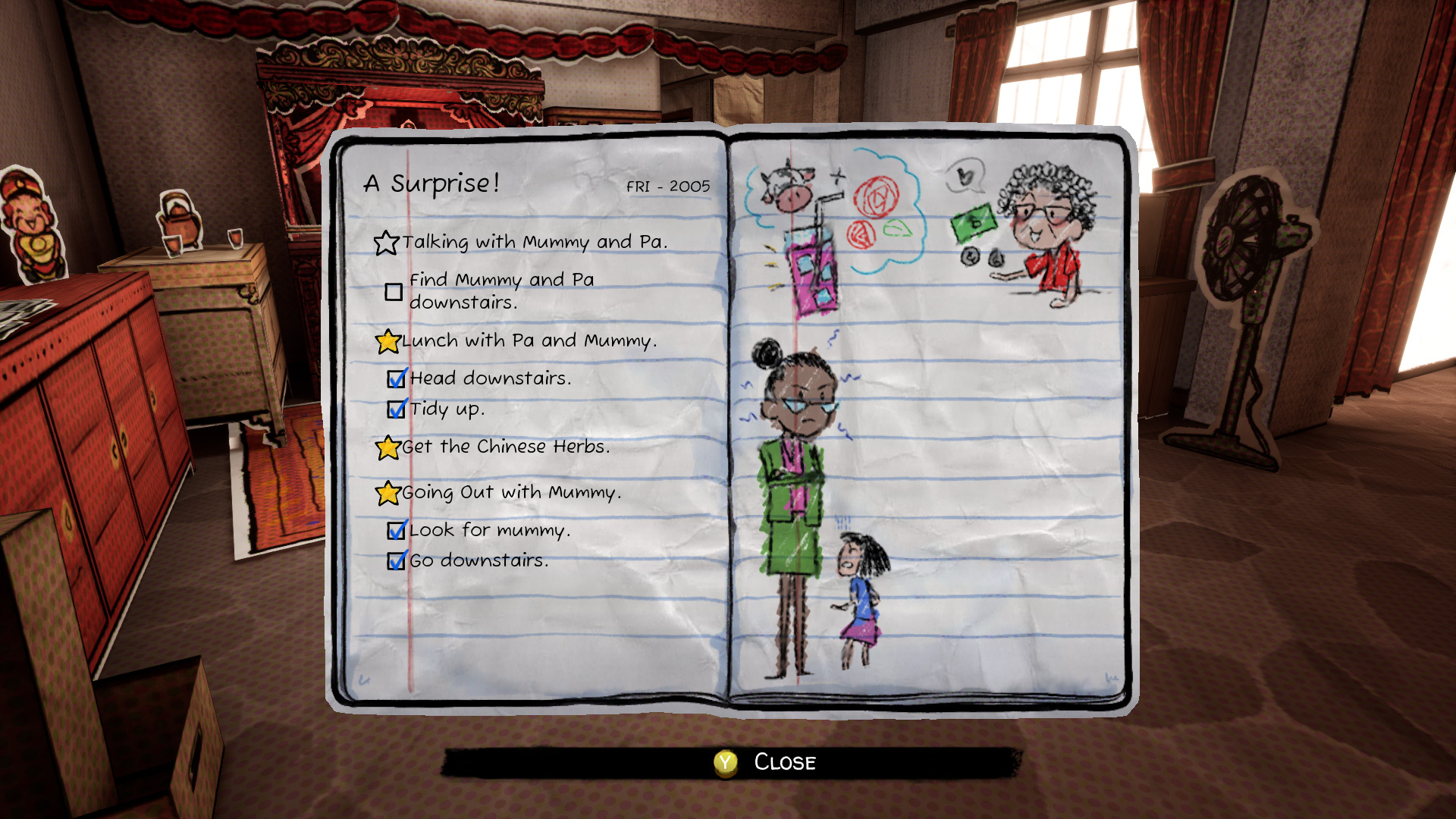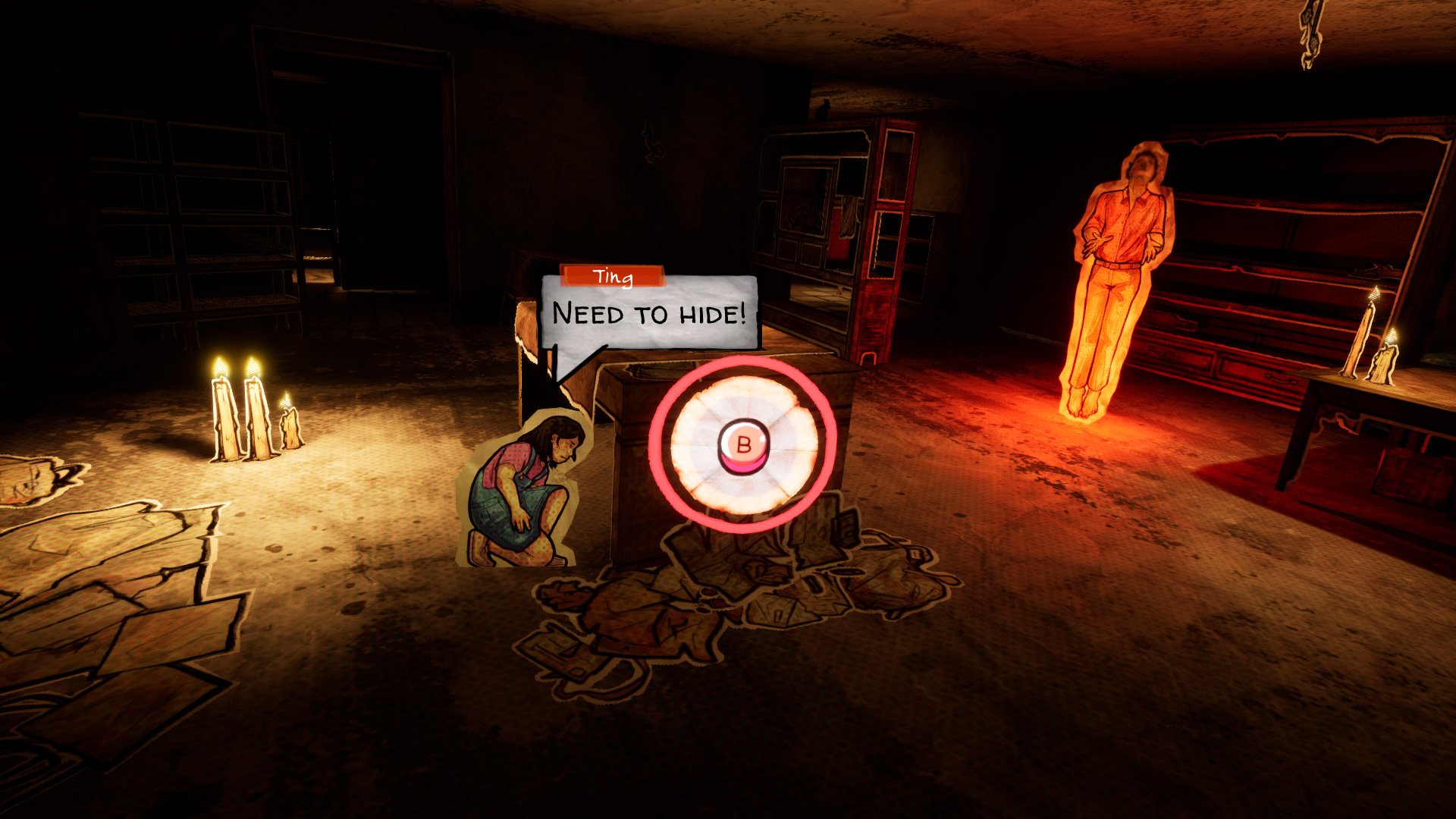How does the story end?
I grabbed the review of Paper Ghost Stories: Third Eye Open because it looked like a good choice for Halloween scares. I was wrong. The game does involve ghosts, and there are some creepy moments to work through, but this is mostly a family drama as seen from the point of view of a young girl who…well, she sees dead people.
Third Eye Open quickly introduces us to this girl, named Ting, and Xiu, the young ghost she befriends. We also meet her parents, who are preparing her for preschool. The mother is patient and understanding, while the father is stern and pragmatic. Their conflicting parenting styles create tension that hangs over Ting as she’s coming to terms with her supernatural powers while wrestling with fears of stepping outside her home life.
Two elements of Paper Ghost Stories: Third Eye Open will quickly grab the player’s attention. First, as you can tell from the screen captures, are the graphics. The game is presented in a 3D world of 2D objects, including the characters. Characters and objects are presented as flat, paper-constructed objects as if in a diorama for a grade school project. The environments are colorful and detailed while lacking any real heft. It’s a unique look that maintains its charm throughout the course of the game.
The second is the game’s setting. The game takes place in Malaysia (where the development studio is located) and is based on Malaysian and Chinese folklore and traditions. The local vernacular is used heavily and explained throughout the game, giving the players a unique lesson in Malaysian language and culture along the way. Certain elements seemed forced—I’m sure Ting would’ve already known most of the information her mother imparts—but it was interesting to learn and made the dialogue fun to read (there is no voice acting).
Gameplay mostly serves to push along Ting’s story as she grows into her powers. The player is provided with numerous tasks to complete, the bulk of which involve getting to know your surroundings. Early on, these can be as simple as cleaning Ting’s room or delivering invitations to the neighbors. Because they’re tied into the story, however, they rarely feel like busy work, even if that’s exactly what they are.
The drawback here is that the game does little to grab the player’s interest at the start. We’ve got a girl with a dead friend, but the story focuses on the tension-filled family dynamic and Ting’s reluctance to make living friends. There’s a lot to read and learn, but not a lot to actually do. The minigames help, but even a good number of these feel more like everyday activities than important steps in a young girl’s supernatural adventure: cooking, learning origami, etc. As a result, the bulk of the game feels more like a slice-of-life visual novel than a ghostly adventure.
Paper Ghost Stories: Third Eye Open does lean into its supernatural element for some creepy moments. Players will explore a darkened forest and the neighborhood’s haunted house, for example, providing segments where Ting has to move around without being detected. Ting will have tasks to complete during these moments, forcing the player to really lock into the environment and gameplay. The camera doesn’t always help, as it follows Ting a bit too closely, making it difficult to see what the player should be able to see. Still, this was my favorite aspect of the game, and I wish it had been used more than it was.
Of course, it’s not fair of me to criticize Paper Ghost Stories: Third Eye Open for not being what I wanted it to be. It’s not scary, just a bit creepy in parts, and even the Goosebumps crowd would find its supernatural elements quite tame. But it does do a lot of things well. The story is touching and effective, the visuals are a treat, and the game makes excellent use of its setting. I won’t suggest it for those seeking Halloween frights or challenging adventures, but it’s a solid option for younger gamers who can relate to the troubles of growing up, and for parents who are there to help them through it.
Review: Paper Ghost Stories: Third Eye Open (Nintendo Switch)
Good
Paper Ghost Stories: Third Eye Open plays much more like a visual novel than an action/adventure game as claimed in the Nintendo eShop, but it provides enough minigames, light puzzle solving, and general creepiness to appeal to younger gamers haunted by the prospect of growing up.

